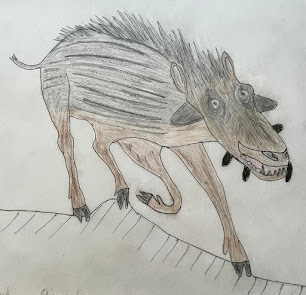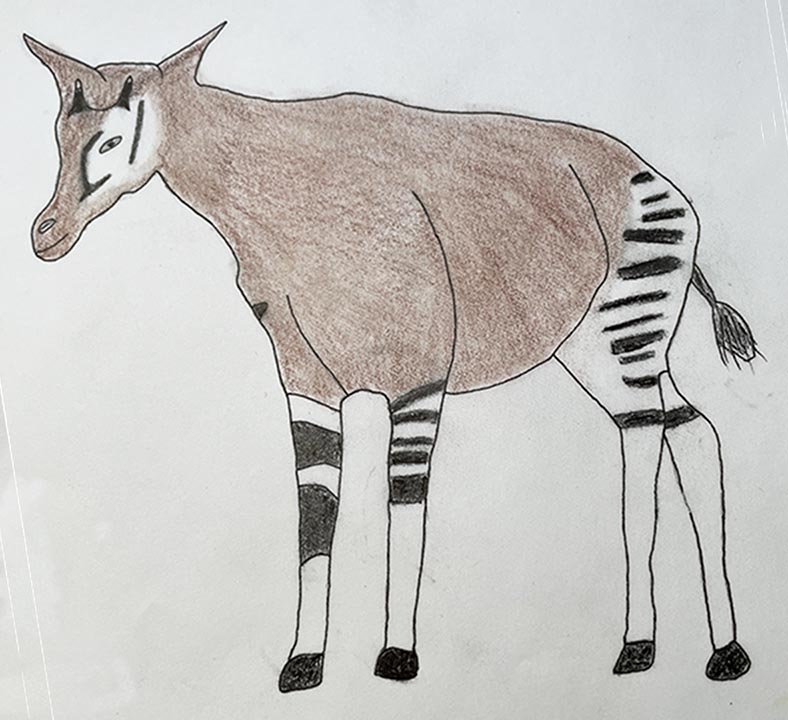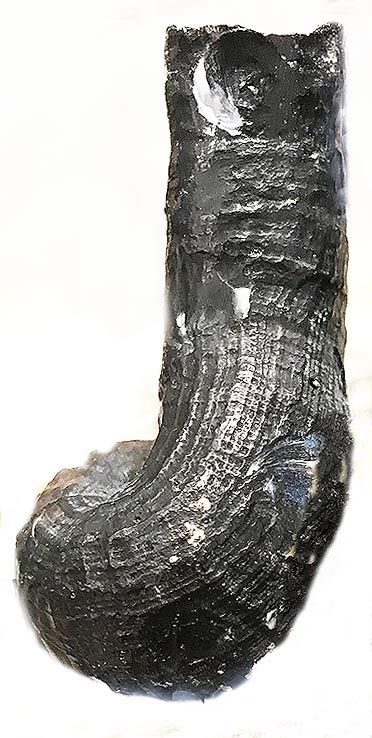Entelodon [the name means “complete teeth”) were large pig-like mammals that lived in forests of the northern continents, especially Europe. They are classified as entelodontids. They were not true pigs, and the moniker “killer pigs” is very misleading. Molecular studies indicate that Entelodon was more closely related to hippos and cetaceans (whales) than to pigs or peccaries.
Entelodon sp. (length 2 m), from the Oligocene of Europe.
Classification (from Wikipedia, 2024):
Kingdom Animalia
Phylum Chordata
Class Mammalia
Order Artiodactyla (= even-toed ungulates)
Suborder Suina
Family Entelodontidae
Genus Entelodon
Entelodon teeth are similar to pigs [i.e., dentition formula 3.1.4.3/3.1.4.3] --- namely, each row has three pairs of robust incisors, a pair of large canines, four pairs of premolars, and three pairs of simple flat molars. For an explanation of mammal dentition, see one of my earlier posts that discusses this subject matter. Entelodon incisors were commonly stout and blunt and their canines robust, suggesting that Entelodon was an omnivore and especially good at browsing (for nuts and fruit, branches, and carrion?). Its adult teeth were especially good for crushing and grinding.
This genus ranged from the late Eocene to early Miocene (38 to 19 million years ago) and lived in Europe, Asia, and North America. They were most common during the Oligocene, especially in Europe. They were never abundant in North America although they survived there until the early Miocene.
Entelodon resembled a large wild boar. Entelodon’s length was about two meters. Most individuals were no taller (at the shoulder) than about 6 feet. They were strong shouldered and had a bison-like spinal hump and a heavy head. They also had a huge head, and their cheekbones developed huge flanges that projected downwards and outwards. Also, the underside of their lower jaw had one or two pairs of knob-like tubercles that were variable in size from individual to individual.
[Note: The largest known entelodonid [genus Daeodon] lived in North America. It was up to 1650 pounds in size and reached almost 7 feet tall at the shoulder].
Entelodon could have run well but probably not at high speeds nor for too long.
REFERENCES CONSULTED
Savage, R.J.G. and M.R. Long, 1986. Mammal evolution (an illustrated guide). British Museum (Natural History), 259 pp.
Wikipedia. 2024.
















